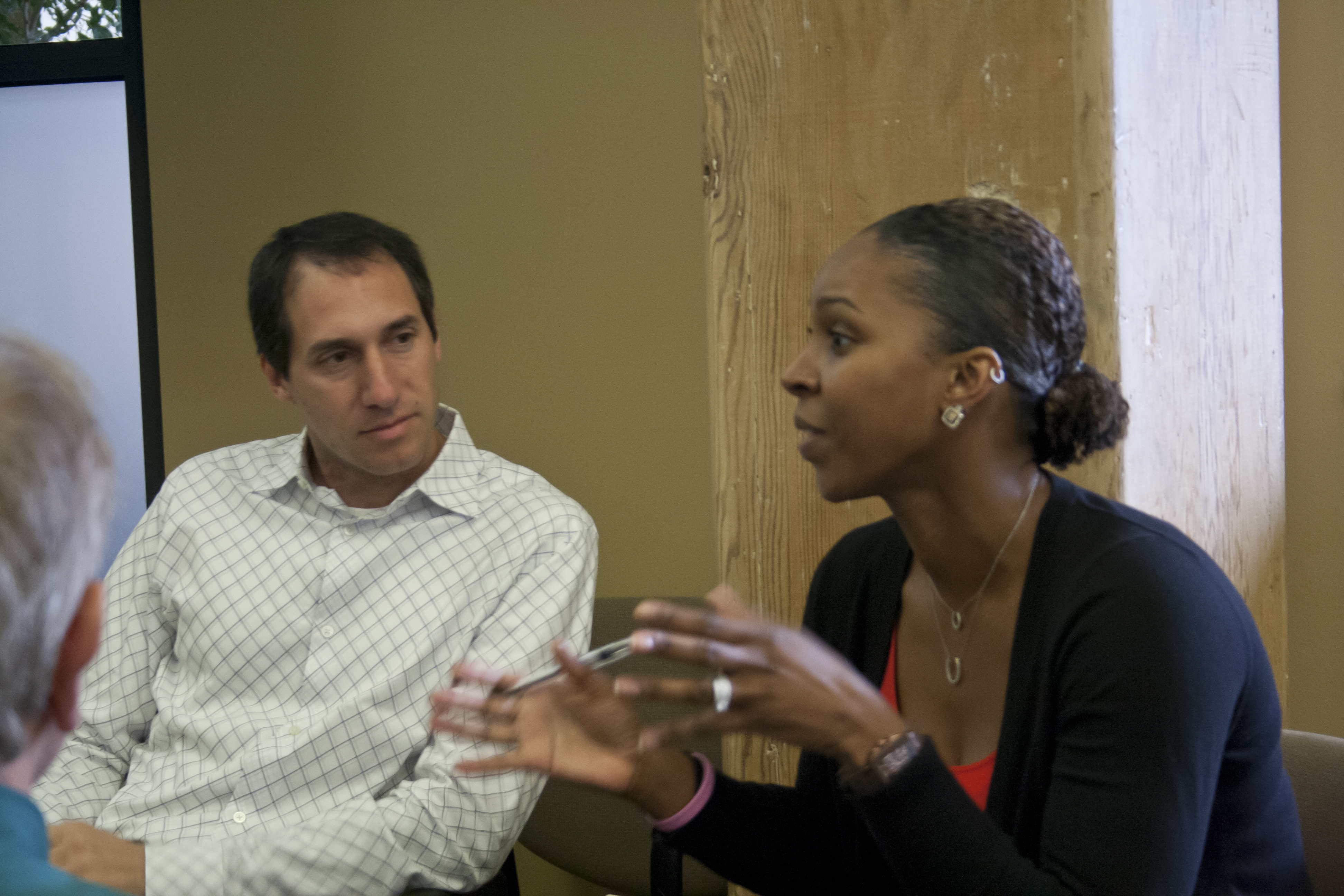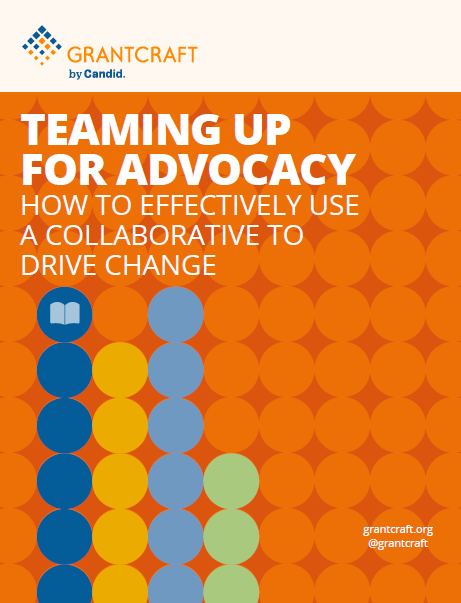Sticking Points: Agreeing to Strategies
While it’s essential that funder policy collaboratives have sharp, clear, and measurable goals, the options for reaching those goals can be overwhelming. Communications, research, advocacy, litigation, grassroots organizing, and internet activism are just some of the tactics and strategies funder collaboratives use to move the policy needle. That makes decisions about homing in on a focused strategic direction challenging, to say the least. 
Members of a collaborative working to abolish the death penalty, for example, knew that the only way they would meet this goal was through a Supreme Court decision. But they weren’t clear how they were going to make that happen. “There were members who thought the best way to do was Way A or others, Way B. Some saw it as a moral issue so they wanted to support the Catholic Conference or organizations representing people with family members on death row. Others saw it as a legal issue so they wanted to fund lawyers and access to justice.”
Disagreements aren’t always a bad thing, though. “We’ve found that funders representing different wings of the movement contribute valuable stuff to our strategy development. We wouldn’t be where we are if everyone was doing the same strategy. Does that mean some people get less support sometimes? Sure, sometimes, but that’s just part of the process.”
Stories From the Real World
Our death penalty collaborative started out with the concept of 'movement-building,' to abolish the death penalty, which made it hard to prioritize resources. After about six years, we moved to a campaign-style model that targets specific states and litigation strategies with the most potential to reduce death sentences. It was challenging to move to this new model because it involved making hard decisions about which organizations would be funded. There were also multiple views about how the campaign should be established. So we hired an outside consulting firm to interview everyone and then work with us to make those decisions.
Our collaborative decided to support both litigation and grassroots organizing as strategies toward our policy goal because we believed both were important and complementary. Over time, however, we were surprised to see how much these strategies were working cross purposes because of a lack of respect and trust between the litigators and the advocates. Lawyers were usually focused on a particular case that an individual was bringing to the court, while advocates were more focused on the broader constituency and how public policies would affect them. So we decided to reframe our work in terms of ‘corridors of change,’ rather than one huge strategy. When something was brewing in the courts, we’d bring in the litigators to talk about it with the advocates, and when something was emerging in the state legislatures, we’d bring the advocates in with the lawyers there. They all started talking to each other and, eventually, understood each other’s value and importance in moving the issue. We actually helped kill a very bad bill in one state because of this process!
The tension between two donors who saw things differently in terms of strategy and weren’t interested in talking about alternatives became an opportunity for our collaborative to find ways to incorporate both perspectives. Rather than fight about who was right and wrong, we took the two foundations on a joint site visit, which gave them the chance to stand down from their differences and see places to do something together. Now, they’re seeking a joint proposal from one organization that will be submitted to both funders. You have to find those places where you get people to stand down. It’s on a continuum. You get yourself lined up, but there’s some work to do in the middle usually so you try to find these points.
Our immigration collaborative had debates on where to invest its field-building money—whether it should go to anchor organizations in traditional immigrant-receiving states/cities or toward building the capacity of groups in places where immigration was a relatively new phenomenon. It was painful to consider moving money away from high-performing, longstanding grantees that are continuing to expand and can do more with funding. When there are different feelings about allocation of funds like these, we resolve this through well-facilitated conversations. We talk until we come to consensus. We also evaluate what we’ve done so we can look back and say, “Did we make the right call, or should we have done something different?” and learn from it.
How do grantmakers get consensus about a strategy?
-
Stipulate a crystal-clear policy goal(s). To get there, go around the table and ask members what’s uniting them in this. Ask everyone to say what they think the goal is to make sure people are on the same page. “Our collaborative agreed that we wanted to work on a particular issue, but everyone had a slightly different take. One foundation saw it through a health lens, and another saw it through a human rights lens. But we all still agreed on the larger goal. Having that clarity is essential because you can go back to this when there are disagreements about strategies or tactics.”
-
Accept that there will be some disagreement... “We try to get a plurality of funders around one particular strategy. That’s not always easy. One colleague struggled with it not being a consensus process. He felt much better, though, once he was fully engaged, even if his views were overridden.”
-
…but deal with it through dialogue or bringing in outside experts. Disagreements about strategic direction can often be resolved through “a constant process of dialogue at the table,” including facilitated conversations. Through that process, “we’ve really seen funders get it. They start to understand the strategies they weren’t paying attention to before and how they work together. And they see how the groups we’re funding are getting results using these different strategies. So, it starts to make more sense why we have different strategies and priorities.”
Another funder agrees: “We had some funders join who thought the collaborative wasn’t funding enough of their thing, but by sitting at the table, over time, they saw the value in the analysis and being part of a collegial group of people. They saw that resolution is more organic, rather than people winning or losing.”
-
Get out of the ideological bubble. A grantmaker with years of experience in advocacy collaboratives strongly advises her colleagues to rise above seeing issues as a “Right/Left battle” because some of the most successful efforts work across all kinds of ideologies. “That kind of alliance building gives collaboratives an outstanding opportunity to learn more about what’s going on outside their own ideological bubble. I fund groups from Left to Right, and at a meeting, I mentioned that I was funding one particular libertarian group. People freaked out, but my attitude was, ‘if it gets us across the finish line, I’ll fund the devil himself.’”
-
Be open to new perspectives on old issues. A funder who’d been part of an immigration reform collaborative was confused by a new member’s suggestion that the group pay more attention to how this issue affected LGBTQ people. “I didn’t understand why or how that related to our collaborative. It seemed off track to me. I didn’t vote against it, though, because we’re a collaborative, and we talked about it a lot first. I’m glad we funded in that area, because as time went on, I learned a lot about how this issue was actually very related to our work. In fact, we incorporated it into the collaborative’s overall strategy, and it became one of the most successful things we’ve ever done!”
-
Keep in mind that the best strategies can and do change, depending on context. The immigration rights collaborative mentioned above started out with a federal-level policy goal that initially saw grantees as the “ground troops” that would push reform over the finish line. Today, it has a different view. “We now look for successes at the state level that have changed life for the better for immigrants, and we lift these up as just as worthy as the ‘grand goal’ of federal reform. A lot of federal-level bills, actually, required what we thought were terrible compromises, and we just didn’t think they were compromises worth making. If you have a terrible bill that’s going to legalize half the people here, and deport the other half, that’s hard for the field to support, and it takes all of the air out of your own supporters sometimes. That’s the tension: You can seriously depress your own base if you’re hitching your wagon to a vehicle you have to hold your nose to drive. Now people are willing to fight for more piecemeal but better than a Grand Bargain that’s more punitive.”
NOW REFLECT:
- Do we have a clear and mutually understood policy goal?
- What is our process for deciding on the strategies for meeting that goal? What if there is disagreement?
- How do we know when to revisit or question an agreed-upon strategy? Are there interim reflection points?
FURTHER READING:
- Lessons in Funder Collaboration: What the Packard Foundation Has Learned About Working with Other Funders
- Power Amidst Renewal: Foundation Support for Sustaining Advocacy After Disasters
Please click here for information on GrantCraft’s methodology for this research.
(Photo: Portland Development Commission, licensed under CC BY-NC 2.0)


